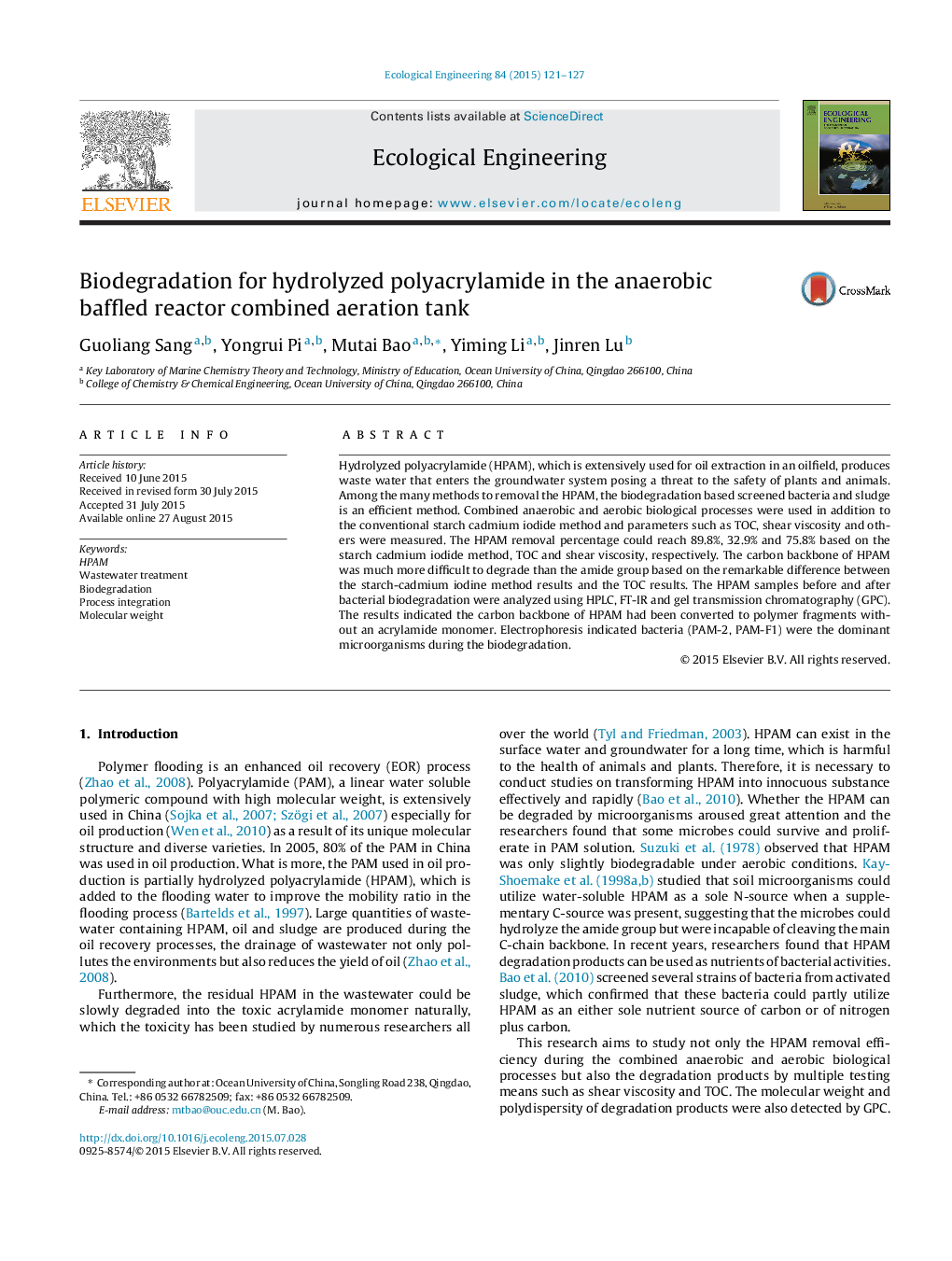| Article ID | Journal | Published Year | Pages | File Type |
|---|---|---|---|---|
| 4388775 | Ecological Engineering | 2015 | 7 Pages |
•HPAM removal efficiency was evaluated by multiple testing means.•Molecular weight of products was about 1/5000 of the original HPAM molecular weight.•Reduction of TOC proved HPAM can be utilized as C-source by microorganisms.•Reduction of amide group concentration proved HPAM can be utilized as N-source.•PCR-DGGE proved the inoculated bacteria were dominant species in degradation.
Hydrolyzed polyacrylamide (HPAM), which is extensively used for oil extraction in an oilfield, produces waste water that enters the groundwater system posing a threat to the safety of plants and animals. Among the many methods to removal the HPAM, the biodegradation based screened bacteria and sludge is an efficient method. Combined anaerobic and aerobic biological processes were used in addition to the conventional starch cadmium iodide method and parameters such as TOC, shear viscosity and others were measured. The HPAM removal percentage could reach 89.8%, 32.9% and 75.8% based on the starch cadmium iodide method, TOC and shear viscosity, respectively. The carbon backbone of HPAM was much more difficult to degrade than the amide group based on the remarkable difference between the starch-cadmium iodine method results and the TOC results. The HPAM samples before and after bacterial biodegradation were analyzed using HPLC, FT-IR and gel transmission chromatography (GPC). The results indicated the carbon backbone of HPAM had been converted to polymer fragments without an acrylamide monomer. Electrophoresis indicated bacteria (PAM-2, PAM-F1) were the dominant microorganisms during the biodegradation.
Graphical abstractFigure optionsDownload full-size imageDownload as PowerPoint slide
